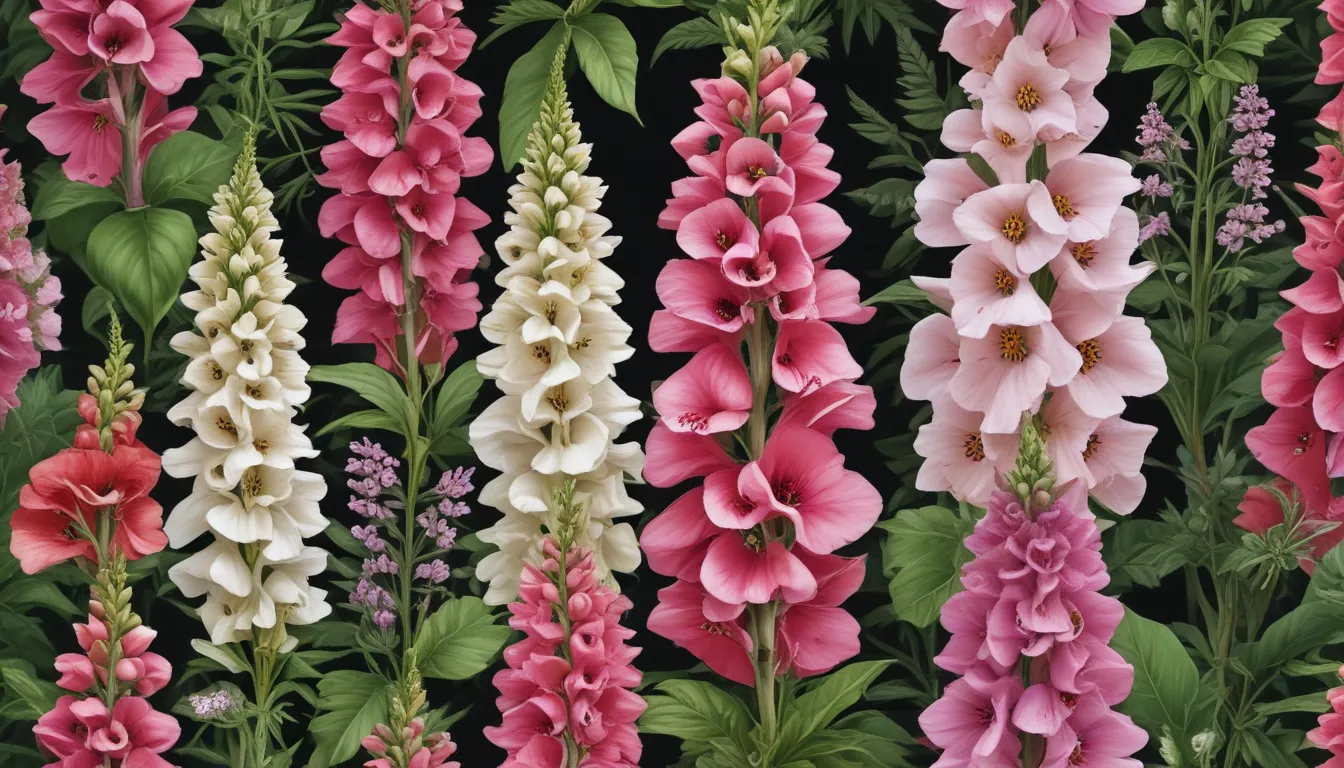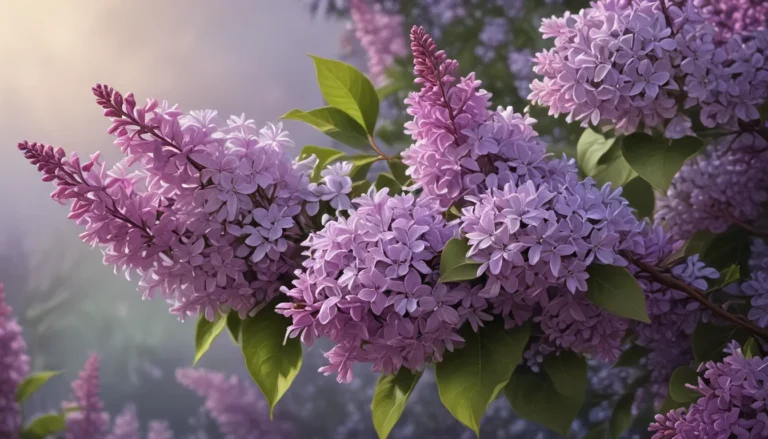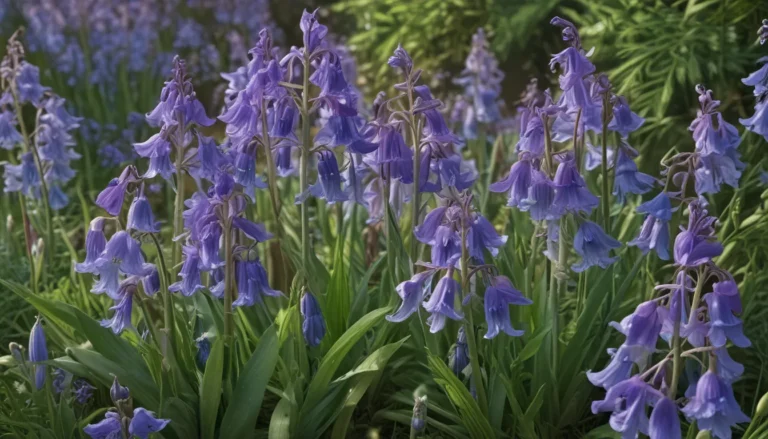The pictures we use in our articles might not show exactly what the words say. We choose these pictures to make you interested in reading more. The pictures work together with the words but don’t take their place. The words still tell you the important facts.
Are you ready to delve into the enchanting world of foxglove? Foxglove, also known as Digitalis purpurea, is a plant that has mesmerized gardeners and nature enthusiasts alike for centuries. With its tall spires of bell-shaped flowers and vibrant colors, foxglove adds a touch of elegance to any garden or landscape. But there is so much more to this captivating plant than meets the eye. In this article, we will uncover nine astounding facts about foxglove that will deepen your appreciation for its beauty and shed light on its rich history, medicinal properties, and ecological significance. So, let's embark on a journey to discover the secrets behind the allure of foxglove.
Foxglove: A Beautiful Flowering Plant
Foxglove, scientifically known as Digitalis, is a stunning flowering plant that belongs to the family Plantaginaceae. Its unique bell-shaped flowers come in various shades of pink, purple, white, and yellow, captivating the hearts of all who behold them. Originally native to Europe, foxglove is now cultivated and cherished by gardeners around the world for its exquisite beauty.
A Rich Historical and Medicinal Background
Throughout history, foxglove has been revered for its medicinal properties. The plant's leaves contain compounds called cardiac glycosides, which have been used to treat heart conditions for ages. In fact, digoxin, a powerful medication derived from foxglove, is still used today to address certain heart ailments. The plant's historical significance and healing properties make it a treasured botanical gem.
Beloved by Bees and Butterflies
Not only is foxglove a visual delight, but it also serves as a precious resource for pollinators. Bees and butterflies are particularly drawn to its nectar-rich flowers, making it a vital plant for supporting local ecosystems. By attracting these pollinators, foxglove plays a crucial role in maintaining biodiversity and enriching the surrounding environment.
A Prominent Figure in Folklore
Foxglove has long been intertwined with myths and folklore, captivating the imagination of storytellers throughout the ages. In Celtic mythology, fairies were said to wear foxglove petals as gloves, hence the plant's whimsical name. However, it is essential to note that while foxglove is enchanting, its leaves and flowers are toxic if ingested, underscoring the importance of respecting its beauty from afar.
Embracing Its Biennial Cycle
Foxglove follows a biennial growth cycle, spanning two years to complete its life journey. In the first year, the plant produces a rosette of leaves, showcasing its graceful foliage. In the second year, tall flower stalks emerge, reaching heights of up to six feet and adorning the garden with their elegant presence. This cyclical rhythm adds to the plant's allure and mystique.
A Versatile Garden Gem
Thanks to its stunning flowers and adaptability to various environments, foxglove is a popular choice among gardeners seeking to enhance their outdoor spaces. Whether grown in full sun or partial shade, foxglove's tall flower spikes create a dramatic impact in borders, woodland gardens, or cottage-style landscapes. Its versatility and visual appeal make it a beloved addition to any garden setting.
The Art of Self-Seeding
One of foxglove's captivating traits is its ability to self-seed and spread effortlessly. As its flowers fade, the plant produces seed pods that burst open, dispersing tiny seeds in the vicinity. This natural propagation method allows foxgloves to multiply and naturalize in gardens, forming striking displays season after season. Its self-sufficiency and resilience make it a delightful addition to any landscape.
Blooms that Beckon Hummingbirds
The tubular shape of foxglove flowers and their abundant nectar content attract the attention of hummingbirds, nature's tiny aerial acrobats. These delightful birds are drawn to the vibrant hues of the blooms and eagerly feed on the sweet nectar within, creating a harmonious relationship between plant and pollinator. By planting foxglove, you can create a welcoming haven for these enchanting creatures in your garden.
Inspiring Artists and Writers Alike
Throughout history, foxgloves have served as a muse for artists, poets, and writers captivated by their ethereal beauty. From paintings to literary works, the plant's graceful form and striking colors have inspired creative minds to capture its essence on canvas and in words. The presence of foxgloves in artistic expressions adds a touch of charm and wonder, elevating the plant to a symbol of artistic inspiration and natural grace.
Conclusion: Embracing the Wonders of Foxglove
In conclusion, foxglove stands as a botanical marvel with a rich tapestry of history, beauty, and ecological significance. From its alluring appearance to its healing properties, foxglove captures the imagination and captivates the senses of all who encounter it. Whether you are a seasoned gardener, a nature enthusiast, or simply curious about the wonders of the natural world, exploring the realm of foxglove promises to be an enlightening and awe-inspiring experience. So, next time you encounter this exquisite plant, take a moment to marvel at its beauty and reflect on the remarkable facts that make foxglove a truly extraordinary addition to the plant kingdom.
FAQs: Answering Your Foxglove Queries
-
What is the scientific name of Foxglove?
A: The scientific name of Foxglove is Digitalis purpurea. -
Are Foxglove flowers toxic?
A: Yes, Foxglove flowers are highly toxic if ingested due to the presence of digitalis glycosides, which can be harmful to humans and animals. -
Can Foxglove be grown indoors?
A: While primarily an outdoor plant, Foxglove can be grown indoors in containers under suitable conditions that provide cool, moist environments and ample sunlight. -
How tall can Foxglove plants grow?
A: Foxglove plants can reach heights of 3 to 6 feet, depending on the variety and growing conditions, showcasing their towering spires of bell-shaped flowers. -
When is the best time to plant Foxglove?
A: The best times to plant Foxglove are in early spring or late summer/early fall, allowing the plant to establish roots for blooming in the following year. -
Can Foxglove be used in herbal medicine?
A: Yes, Foxglove has been utilized in herbal medicine for centuries, containing cardiac glycosides beneficial for treating heart conditions under qualified professional guidance. -
Do Foxglove plants attract pollinators?
A: Yes, Foxglove plants are known to attract pollinators such as bees and hummingbirds, thanks to the tubular shape of their flowers that appeals to these flying creatures. -
How long do Foxglove flowers bloom?
A: Foxglove flowers typically bloom for 2-3 weeks, dependent on environmental conditions, with deadheading encouraged for continuous blooming. -
Can I divide Foxglove plants?
A: While not recommended to divide, Foxglove plants can propagate through self-seeding, where collecting and sowing seeds is the preferred method for propagation.
Unlock the mysteries of foxglove and explore its captivating world with our articles featuring additional mesmerizing insights. Discover the extraordinary characteristics of foxglove beardtongue and unearth the unbelievable truths surrounding Digitalis purpurea's rich history and wonder. Each article offers a unique lens through which to view this enchanting plant, promising to deepen your understanding and admiration for foxglove's splendor. Immerse yourself in the fascinating realm of foxglove, letting your curiosity bloom as you uncover more about this extraordinary botanical treasure.
Your Feedback Matters
Continuously striving to deliver trustworthy and engaging content, we value your feedback as it contributes to our commitment to excellence. Every fact shared on our platform is a contribution from users like you, encompassing a diverse array of insights and information. Through meticulous editorial review, we ensure the accuracy, reliability, and credibility of the facts we present. Trust in our dedication to quality and authenticity as you explore, learn, and engage with us on this captivating journey of discovery.






